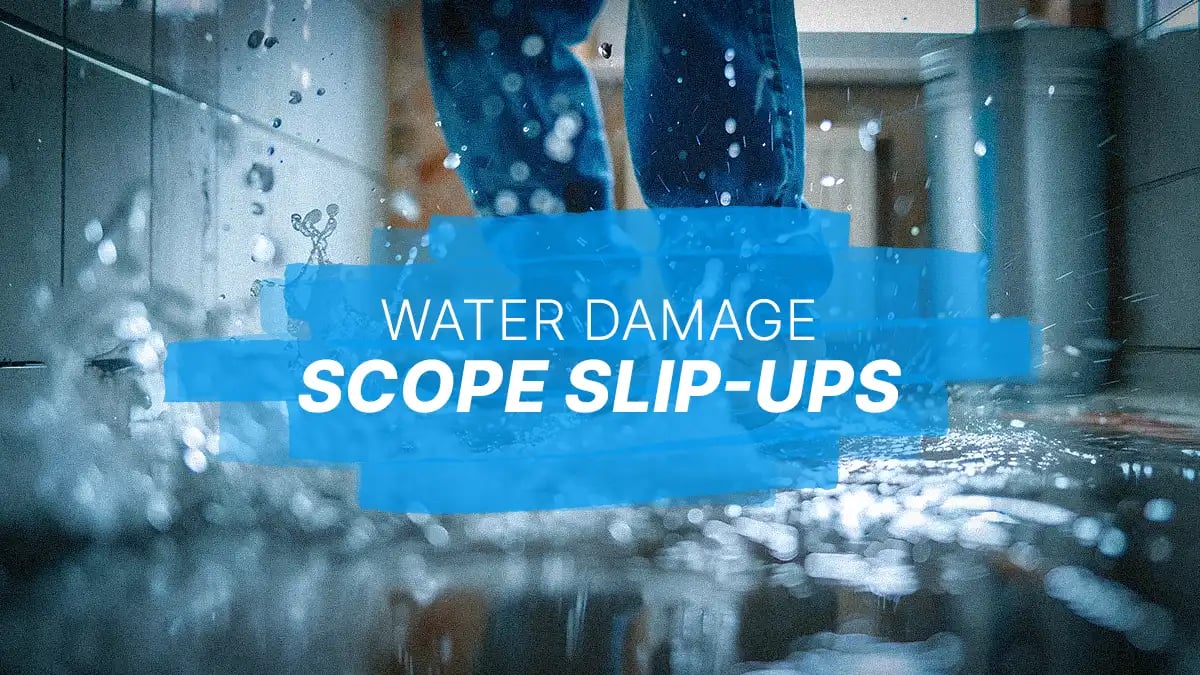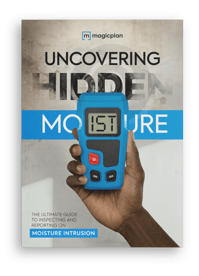featured
/Claims Adjuster
/Restoration
Common Mistakes Techs Make When Scoping Water Damage (How to Avoid Them)

Water damage restoration is a high-stakes business where accuracy and thoroughness can make or break your bottom line. As a contractor, you rely on your technicians to capture the scope of every loss accurate. But even experienced teams fall prey to common mistakes. These errors don’t just slow down claims. They can also lead to rejected estimates, lost revenue, and a damaged reputation with adjusters. Let’s break down what most technicians miss during water damage scoping, the real costs of those oversights, and how you can tighten your process to protect your profits.
The Three Most Common Mistakes That Are Made During Water Damage Scoping
1. Poor-Quality Sketches
One of the most frequent and costly mistakes is submitting sloppy or inaccurate floor plan sketches. For example, technicians will often just gather quick measurements, create a rough sketch and jot down brief notes to try to move quickly through a new job site. But a shortcut approach like this can lead to incorrect dimensions and missed details, undermining a project’s entire insurance claim estimate. Adjusters will spot these types of errors and omissions immediately, and then lose trust in the soundness of the documentation.

2. Generic Labor Entries or Missing Labor Details
Poor sketching is only part of the story. Technicians often fail to include enough supporting notes (especially F9 notes in Xactimate). For example, listing generic labor hours for drywall removal without an F9 note explaining why those hours are necessary is a red flag for adjusters. The same applies to missing details about baseboard removal or other labor-related tasks. Without clear notes explaining line items and creating an air of transparency, an estimate is more likely to be questioned or rejected.
3. Unnecessary Labor Minimums
Many technicians don’t fully understand how estimate software calculates labor minimums. For instance, noting the removal of a single outlet cover can automatically trigger an electrical labor minimum, potentially adding as much as $300 to $400 in unnecessary costs to an estimate. This will attract adjuster scrutiny, for it signals that the estimate may not be reliable.
The Real Cost of Inaccurate or Sloppy Scopes
The financial impact of scoping shortfalls is significant, when you consider all of these problems that might occur:
- When a sketch is inaccurate or incomplete, the adjuster reviewing it is more likely to question the validity of your entire estimate. This skepticism can lead to more requests for clarification and supporting documentation — roadblocks that slow down your project timeline and affect your cash flow.
- Hidden or missed damages can lead to additional problems, including scope creep, unexpected change orders, and budget overruns. Even a single missed measurement can cost you hundreds or thousands of dollars per job, and force you to spend valuable time revising and resubmitting your estimate.
- Line items without supporting notes will be viewed with apprehension, and cause the legitimacy and value of a claim to suffer.
- Unnecessary labor minimums will inflate project estimates, causing questions and costly delays.
- Ultimately, insurance restoration payouts may be reduced or denied, forcing you to absorb costs or fight for payment.
- Plus, your company’s credibility with adjusters will suffer, making every future claim more difficult to justify and settle quickly.

Top-Notch Tips to Improve Scope Accuracy and Comprehensiveness
Your company can avoid common scoping pitfalls by adopting a more disciplined, tech-driven approach to scoping.
- Have your technicians use sketch app software, such as magicplan, to scan and sketch rooms accurately and quickly in real time. A professional digital tool like this can ensure precise measurements of all affected areas, capture photos and panoramic views that supply visual proof of damage, and even integrate seamlessly with Xactimate and Cotality software for precise estimating. It’s all about gathering more explicit job site information, and then using that information smartly to produce a better estimate for water damage restoration.
- Develop and use custom forms or checklists within your floor plan app to guide job-site assessments. This helps ensure that the scoping process does not overlook hidden damage, temporary services, or safety protocols.
- Train technicians to document every step of the scoping process with annotated photos, including moisture meter readings, flood lines, and obvious signs of damage. These should be attached to sketches and estimates to add clarity and increase credibility.
- Require clear, concise scope notes for every unusual condition, missing material, or extra labor. Detailed notes provide context, justify labor, and help estimators and adjusters understand the full scope of work. Essentially, these details make estimates more convincing.
- Make sure technicians understand your estimating software’s labor minimum triggers, and know to only apply those when truly warranted. Have them add notes to clarify their reasoning whenever a minimum is included in a scope.
- Instruct technicians to review each scope before leaving the job site to ensure all areas, damages and required services are captured. A digital tool like magicplan makes it easy to double-check and update documentation on the spot.
Key Takeaway
High-quality scoping is the foundation of profitable, hassle-free residential and commercial water restoration. So, train your technicians to avoid common mistakes by implementing and prioritizing all of the tips shown above. That way, you can be confident that you are helping protect your company’s revenue, reputation, and relationships with adjusters.
No Time to Write Estimates? No Problem.
magicplan Pro Estimate+ (Powered by Epic Estimates) comes with a “we’ll do it for you” option: You can send any scope to magicplan and get a ready-to-go, carrier-compliant estimate built by an expert using the Xactimate estimate program or Cotality (former CoreLogic/Symbility) software. Schedule a call with our sales team today to learn more about this unique service.
Bernd Wolfram
Head of Product

